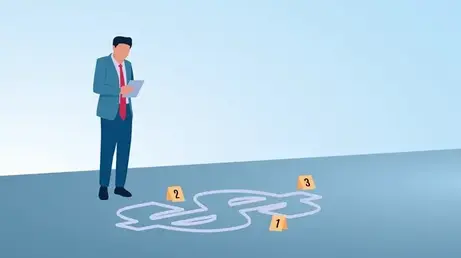
Discover how to cultivate a strategic mindset that empowers you to balance operational tasks with long-term success in this podcast episode with strategic planning expert Mia Maki, FCPA, FCMA.
The operational demands of any organization are at least a full-time workload. Given that, it’s a challenge to find time to develop and advance strategic initiatives. How can CPAs strike a balance and achieve their goals on both fronts? To learn ways to tackle this situation effectively, we asked strategic planning expert Mia Maki, FCPA, FCMA, associate dean, external and outreach at the Gustavson School of Business.
Mia presented “Striking the Balance: A Strategic Mindset for Today’s Operational Challenges” at the PD Nexus: Business and Leadership Insights virtual conference on July 10. The session is available on demand.
When we’re trying to align daily operational tasks with longer-term strategic objectives, what are some common pitfalls to avoid?
Mia: The first is neglecting to manage upwards. Early in my career, I read an article about this and thought, “My boss makes more than I do – why should I manage our relationship?” But when I tried it, it helped my boss and made my life easier. Spend time with your boss, discuss priorities, understand what matters to them, and ask if you’re striking the right balance. Another pitfall is lacking clarity on key organizational initiatives. Senior management might launch something new to move the organization forward, but you might be focused on something that is now a lower priority; get clarity when talking with your boss. Third is not having metrics to show progress on strategic priorities. This requires linking the organization’s strategy to its operational plan and your department’s plan – and having metrics to track your goals.
How can we cultivate a more strategic mindset to balance our priorities?
Mia: Develop the right habits. You need to regularly schedule time to step back from your day-to-day and think about your longer-term strategic goals. If it doesn’t become a habit, it’s incredibly difficult to do. Put it in your calendar for when you have the time and brainpower to do this important work. Then, think over your strategic objectives. Ask yourself: How am I doing on my metrics? How long has it been since I checked in with my boss to make sure that our priorities are still the same?
What’s are top operational challenges that CPAs are facing today?
Mia: Inside our organizations, we are faced with doing more with less. Peoples’ jobs have also been expanded to become more efficient and effective. This has been happening for quite some time, so people are very busy. We’re also experiencing economic uncertainty; most organizations aren’t doing a lot of hiring, instead, they are shoring up their resources. Outside of the organization, we are also faced with volatility from the economy and from climate change; this encompasses wildfires and floods and how they impact your organization, staff, team, customers, and potentially your supply chain.
What are some tools for CPAs to address these challenges?
Mia: Open and frequent communication is one of your best tools. If your team is stressed, bring them together regularly in a group or one-on-one. This creates stability and can also support productivity. External workplace relationships matter too – know who in your organization will contact a customer if they experience a wildfire or if a supplier has a flood. Build your network. In uncertain times, it helps to have people with diverse experience around you. Talk to bankers, peers in similar roles, and others in different companies or industries. They might have insights that can help you through an issue you’re experiencing if they have gone through it themselves. Finally, take time to find tools that increase productivity, instead of just spending more time at work.
Are you seeing new areas of focus to achieve operational efficiency?
Mia: It depends on the organization and their resources to assess and implement new tools. I’ve seen tools used for outsourcing and increased use of technology, including optical readers and other software that minimize the amount of handling and time to input supplier invoices or generate a customer invoices, or any other kind of transaction. And of course, people are using AI tools. For example, when it comes to writing a job description, or a new policy or procedure, people are using ChatGPT or another tool to write that first draft.
Can you share a best practice for integrating new technologies?
Mia: Be clear on the goal you want to achieve and the inputs needed in terms of your time, training costs, and software costs. It’s also important to know the ongoing costs of working with a new technology. Do your calculation based on conversations with your networks, not salespeople. You might find out, for example, that you’ll get a 10% decrease in time spent on certain tasks, a decrease in errors, and the ability to do other more value-added work. If you can balance your costs with your results, you’ll know you’re on the right track.
Any closing thoughts?
Mia: CPAs need to give themselves the freedom to explore resources that support their goals. On the operational side, try different AI tools and apps to see how they work and what results they produce. For strategic support, think long-term. Try a strategy map – it’s a great tool for creating metrics that align with your organization’s strategy. Draft one, share it with your boss, and start a conversation. If you’re interested in strategic thinking, check out Strategy Safari by Bruce Ahlstrand and Henry Mintzberg. Finally, stay curious. Keep exploring. You’ll find great solutions.
Leah Giesbrecht is a communications specialist at CPABC.



